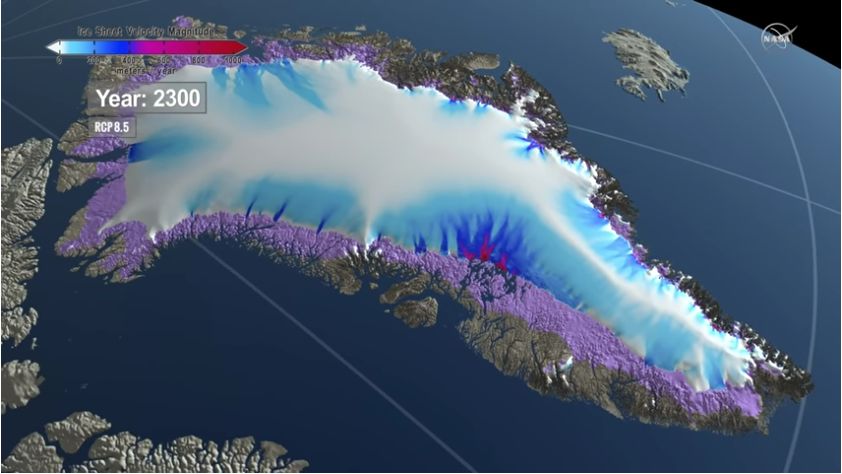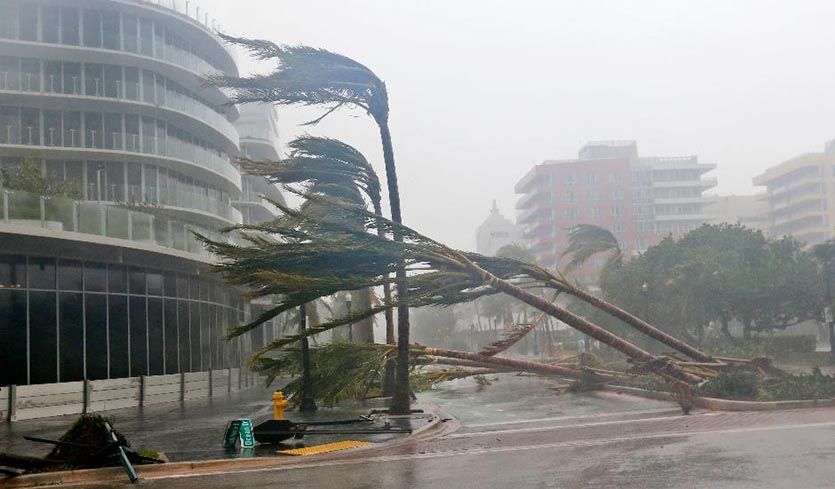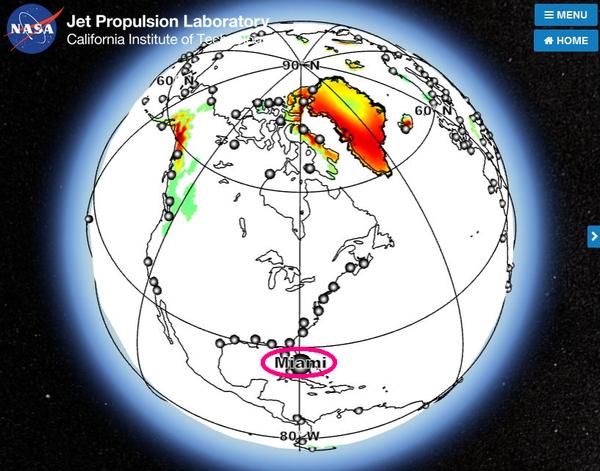
This summer’s arctic heat wave caused rapid melting of the Greenland ice sheet and raised fears that it may disappear in 1,000 years. If it does, our models for future sea level rise are way too low.
That news was eclipsed this week by Hurricane Dorian’s devastation of the Bahamas and threats to the East Coast. The Carolinas took a beating but Miami, pictured below during Hurricane Irma, was spared.

Interestingly, Miami has more to worry about from Greenland than from any hurricane.
On 1 August 2019 CNBC wrote, “The historic heatwave that scorched Europe last week has moved to Greenland, where it’s expected on Thursday to melt away 12 billion tons of water from the ice sheet and irreversibly raise sea levels across the world. … This week’s melt alone is estimated to permanently raise global sea levels by 0.1 millimeters.”
A measurable sea level rise in only one week?! NASA Goddard modeled the future of the Greenland ice sheet in the video below. If all of it melts, the sea will rise 80% more than we expected.
Miami should be especially worried about Greenland. Not only will it add a lot of water to the ocean but it’s location will force the water to rise even more in Miami due to uneven gravitational forces around the globe. Learn more about the relationship between location and sea level rise at Which Glaciers Will Flood Your City?

Watch out, Miami! Greenland is going to make a splash.
(Greenland screenshot and video from NASA Goddard, photo of Miami Beach during Hurricane Irma from Wikimedia Commons, screenshot of glacial contribution to sea level rise from NASA JPL)